Driving around NZ
Self-drive holidays are one of the most relaxing and enjoyable ways to discover New Zealand's stunning sights and diverse landscapes and hiring a rental car from RaD Car Hire is a great way to start.
Travelling between towns and cities in a rental car allows you to thoroughly explore New Zealand's scenic rural areas and gives you the flexibility to stop at small country cafes, wineries, beaches and other points of interest, or simply pause a while to admire the view.
Here you will find all the information you need about driving around New Zealand, including details on
- Driving Documents,
- Road Rules and Safety,
- Fuel in NZ,
- Driving to the Conditions,
- Roundabouts,
- Signs along the Roads,
- Parking.
- Drive Safe https://www.drivesafe.org.nz/
New Zealand's tourist routes are of a very high standard and the main roads are sealed. All roads, including those in rural locations, are signposted. Remember to always drive on the left side of the road.
Driving Licences
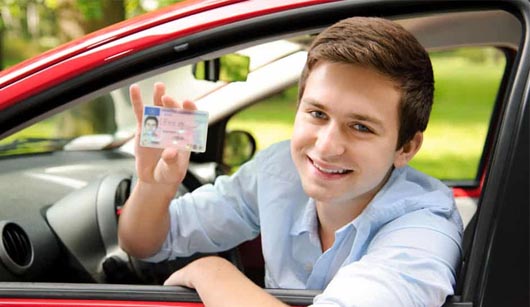
You can legally drive in New Zealand for up to 12 months if you have either a current driver's licence from your home country, or an International Driving Permit (IDP). After 12 months, you are required to convert to a New Zealand licence. This applies to each visit to New Zealand.
In New Zealand all drivers, including visitors from other countries, must carry their licence or permit at all times when driving. You will only be able to drive the same types of vehicles you are licensed to drive in your home country.
Road Rules and Safety
Driving in New Zealand is fairly easy. We have some tips here to make it even easier, so there are no surprises for you. You can also visit the Land Transport NZ for more details: https://www.nzta.govt.nz/
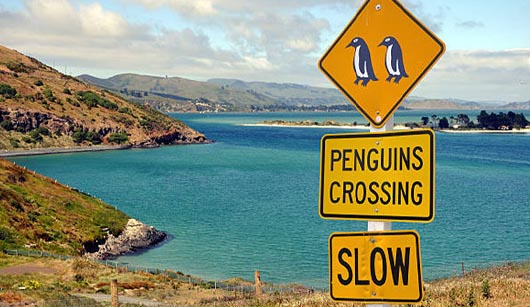
Driving in New Zealand is always on the left-hand side of the road.
Remember 'if you are turning right, give way!' This includes giving way to left-turning traffic and traffic coming from the opposite direction. This applies at cross roads, T-intersections and driveways, where both vehicles are facing each other with no signs or signals, or the same signs or signals
The maximum speed on any open road is 100km/h. The maximum speed in urban areas is 50km/h. Speed limits are clearly marked on most roads. Adjust your speed as conditions change.
Don't underestimate driving times. Although distances may seem short, New Zealand roads often include hilly, narrow or winding terrain which slow down your journey. If you're used to driving in the city, take care when driving on the open country roads and watch out for blind corners and single-lane bridges.
You must always wear a safety belt, both in the front and back seats - It is the law.
When travelling with children, please note that every child under 7 years of age is properly restrained by an approved child restraint that is appropriate for the age and size of the child. They must not travel in the car if you can't put them in an approved child restraint. The vehicle's safety belt on its own is not an approved child restraint.
Approved child restraints include:
- infant restraints for young babies (often called baby capsules)
- restraints for older babies, toddlers and preschool children (often called car seats)
- booster seats for preschool and school-aged children
- child safety harnesses (used with or without a booster seat) for preschool and school-aged children
- all children aged 0-6 will need to be correctly secured in an approved child restraint whenever they travel, and children aged seven will need to be secured in an approved restraint if one is available in the vehicle they are travelling in.
Do not drink and drive in New Zealand - drinking and driving laws are strictly enforced.
Most open roads are single lane each way, except for motorways coming into larger cities (Auckland, Wellington and Christchurch).
In winter some roads may be treacherous due to ice or snow, particularly around mountain passes. Look out for signs indicating slippery surfaces in winter and drive slowly - do not brake suddenly on ice. In some cases chains may be required. Make sure you're familiar with how to fit them.
Fuel in NZ
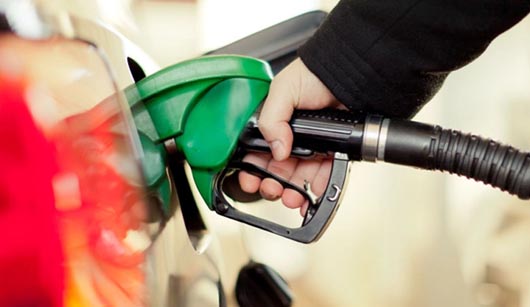
The majority of New Zealand cars run on petrol, while most four-wheel drive vehicles and campervans use diesel. Petrol (gas) cost about two-thirds of the price in Europe. It's dispensed by litre and available in regular unleaded and premium unleaded. Diesel is cheaper than petrol and is easily to be obtained. You can get fuel from service stations, where you can also find small shops with basic grocery items and magazines available.
Driving to the Conditions
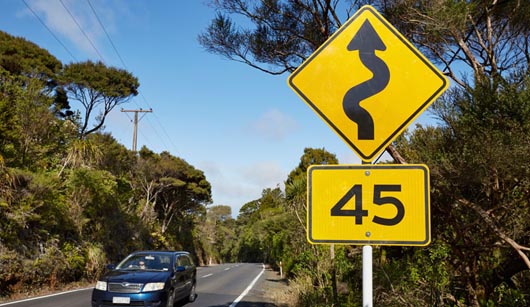
Many New Zealand roads are narrow, winding or hilly which reduces your ability to see what is coming up ahead. Some are unsealed and dusty, particularly in rural areas, where you may see farm animals being moved along rural roads.
The weather in winter can make the roads slippery and icy and can also make it difficult to see oncoming traffic. In New Zealand it is not uncommon for the weather to be unpredictable, even in summer. Adjust your driving to the conditions you are experiencing, including reducing your speed - it is much better to slow down, than take risks with speed.
Always follow other vehicles at a safe distance. A useful guide is the 'three-second rule':
- Watch the vehicle in front of you pass something like a sign, a tree or a power pole.
- See if you can count 'one thousand and one, one thousand and two before you pass the same object. If you cannot, slow down.
Roundabouts
Be careful at roundabouts - in New Zealand the rules may be different from those on roundabouts in your home country.
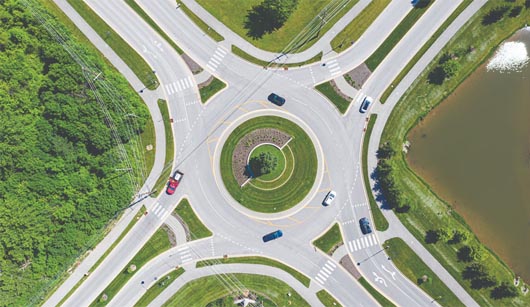
At a New Zealand roundabout, you must:
- Before you reach the roundabout, look for signs and road markings (such as arrows) that guide you to the correct lane.
- Before entering a roundabout, signal:
- left - if you intend to leave the roundabout by the first exit
- right - if you intend to leave the roundabout more than half way round
- Let all vehicles that are crossing your path from your right go first. Only join the roundabout when the way is clear for you.
- If you're going straight ahead, don't signal on entry - signal as you pass the exit before the one you intend taking.
- At multi-lane roundabouts, you need to approach and enter the roundabout in the correct lane for where you intend to exit.
Signs Along Roads
Most of the signs you will see on New Zealand roads are international symbolic signs. New Zealand's signs are generally made of reflective material, making them easier to read at night.
Regulatory signs
Those that must be obeyed by law - These signs have a Red border or background. Red on a road sign indicates there is a road rule that will be broken (and fine) if the sign is disobeyed.
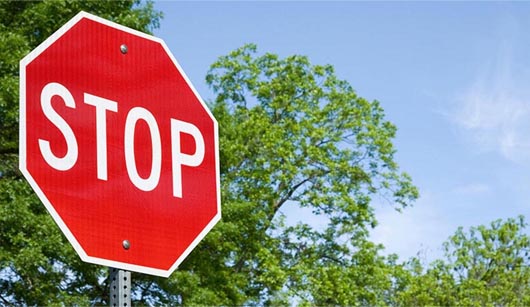
STOP signs
Require a vehicle to be stopped at an intersection and not proceed until the way is clear. Stopping is mandatory, no matter what time of day or the traffic conditions.
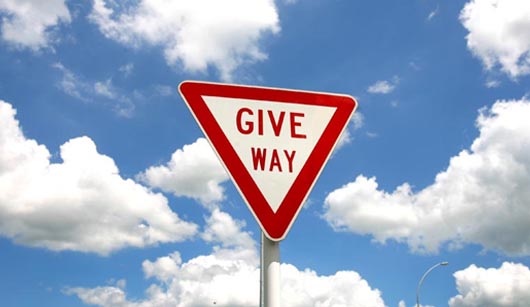
GIVE WAY signs
Require a vehicle to give way or yield right of way to other vehicles (except those controlled by a STOP sign.) Stopping is not mandatory, but wise, as these signs are often erected at busy intersections where vision is obstructed.
At intersections that do not have GIVE WAY or STOP signs or traffic lights or have the same signs or signals, if you are turning right, give way to all vehicles coming towards you, including those turning left that are not turning.
At a T-intersection or driveway, traffic on a terminating road (bottom of the T) must give way to all traffic on a continuing road (top of the T). The rule is: Top of the T goes first.
WARNING signs
These should be obeyed for safety reasons - These signs have black borders and symbols with a yellow (permanent) or orange (temporary) background.
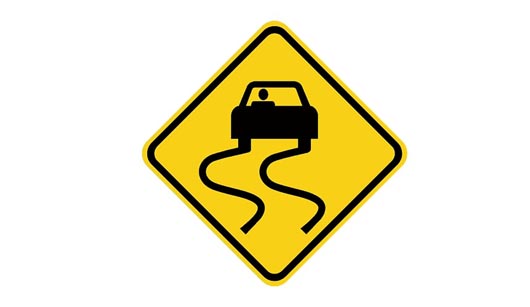
INFORMATION signs
These give information - These normally have white borders and symbols or text with either a blue, green or brown background.
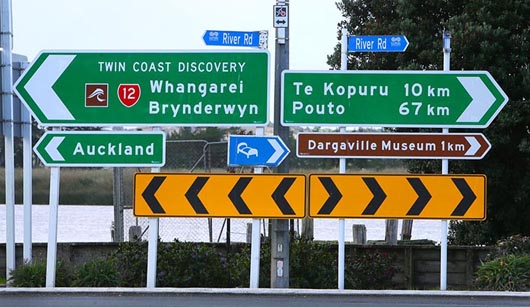
This includes many parking signs and fines may be imposed by the local council rather than the Police if parking limits are exceeded. Rectangular blue signs with a white border that read Pxx (where xx is a number) indicate the maximum amount of time that a vehicle may remain parked in that area.
Parking
Parking is available in downtown areas, in metered parks, parking buildings and shopping mall car park. Councils administer parking, and wardens issue fines to vehicles that are parked illegally, or that have expired meters.
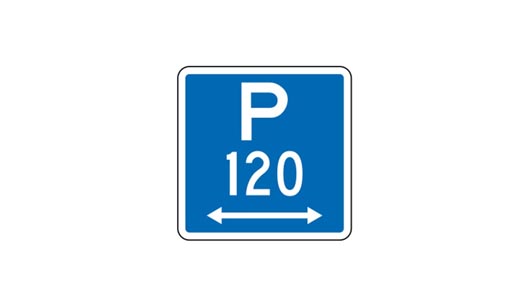
Most cities have clearway zones and during certain times, vehicles parked in these areas my be towed away. If this occurs, call the local traffic authority or police, to find out where your car has been impounded. Retrieving the car involves paying an on-the-spot fine.